At the Farnborough International Air Show a next generation fighter concept model called ‘Tempest’ was revealed.
The project, named ‘Tempest’ is designed to showcase key technologies that will be important in the future. The jet, might end up looking nothing like the concept model.
BAE say that a future combat air system must be able to survive the most challenging combat environments meaning that payload-range, speed and manoeuvrability will be key.
“We expect that the system will be equipped with a range of sensors including radio frequency, active and passive electro-optical sensors and advanced electronic support measures to detect and intercept threats.”
The system say the defence giant, is likely to operate with kinetic and non-kinetic weapons.
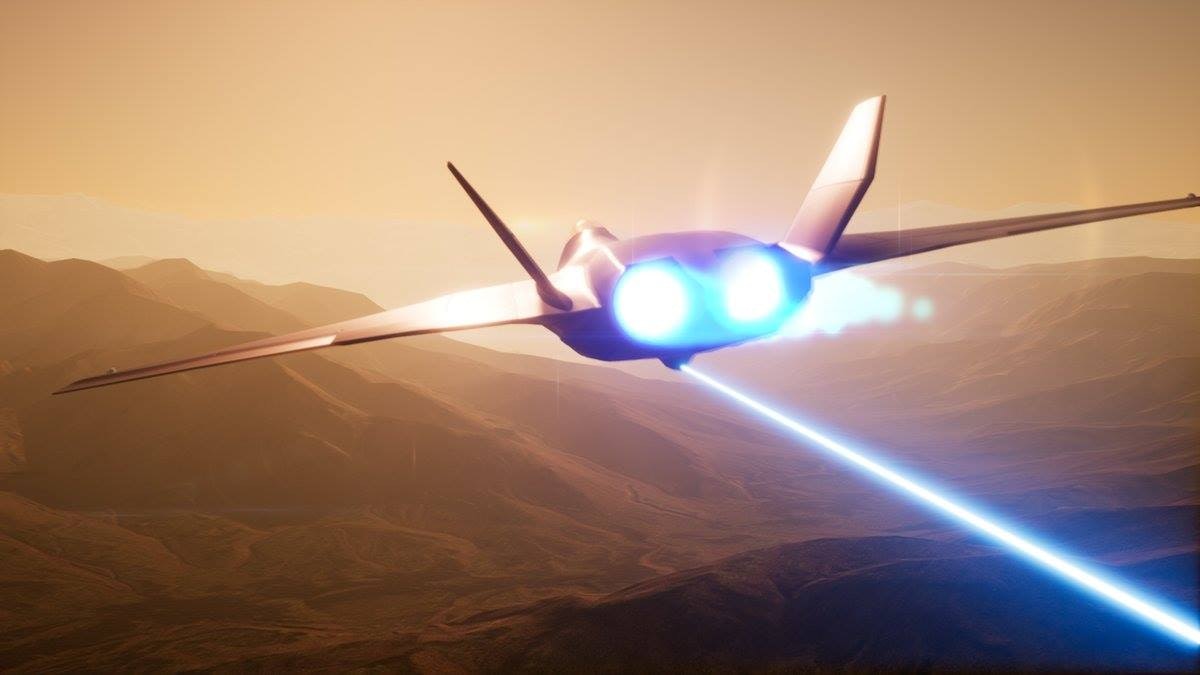
The integration of Laser Directed Energy Weapons for self-defence and use within visual range combat is also highly likely. The use of directed energy weapons on aircraft is becoming reality as the US Air Force will shortly begin testing a laser that will be mounted on an F-15.“We have got tests starting this summer and the flight tests next summer,” Jeff Stanley, deputy assistant secretary of the US Air Force for science, technology and engineering, told reporters.
“There are still some technical challenges that we have to overcome, mainly size, weight, power.”
The Pentagon last year awarded a $26 million contract to Lockheed Martin for a laser program called SHiELD (Self-protect High Energy Laser Demonstrator). The overall aim is to put a laser system on aircraft with an output of about 50 kw to test their ability against unmanned aircraft and missiles.
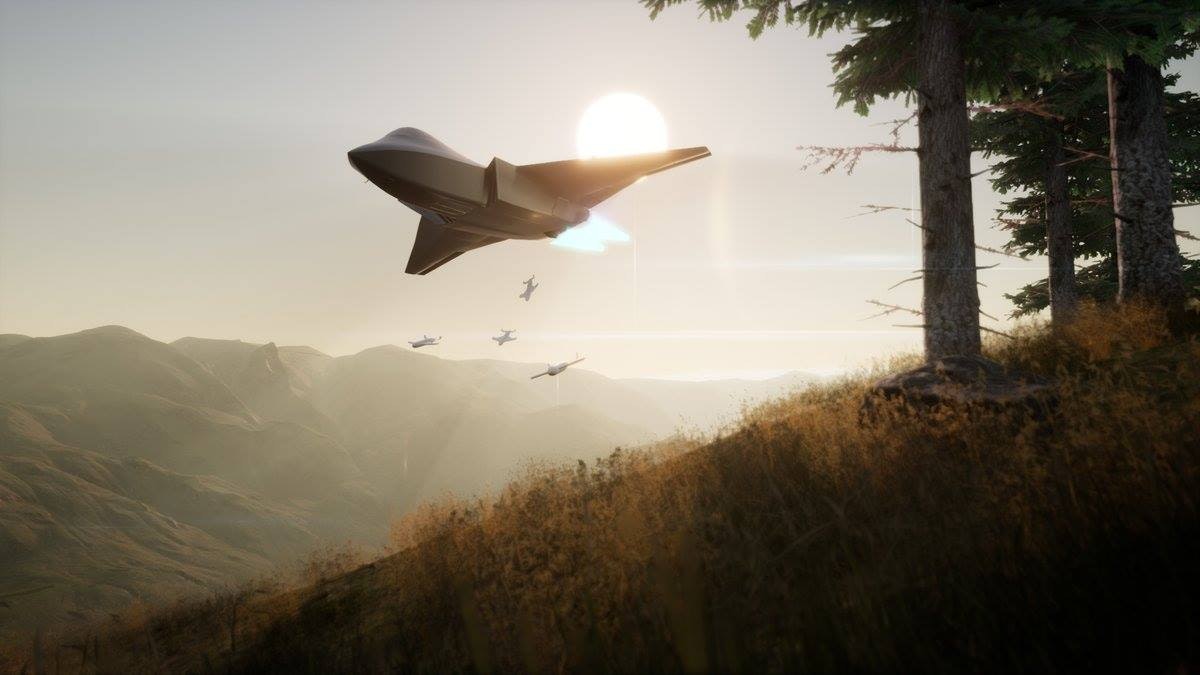
Another driver for the concept say BAE is that air forces of the future ‘will require a fighter system that is highly flexible and can be applied to a wide variety of military operations’, a multi-role aircraft then, which is not really all to different to most new aircraft today.
“Operators will have the ability to rapidly adapt the system to perform new functions or to change its performance.
Depending on the mission, ‘role fit’ additions such as low observable conformal fuel tanks, weapons dispensers, air launched UAV dispensers, large modular sensors, long range oblique photography systems for reconnaissance and Laser Directed Energy Weapons could be available.
Adaptability will be built into the system design, with systems architectures which support a ‘plug and play’ approach, easily integrating new algorithms and hardware.”
The system will also support ‘scalable autonomy’ say BAE, to provide a number of modes of unmanned operation and a range of pilot decisions aids when manned flight is being conducted. This concept is known to most as ‘optionally manned’.
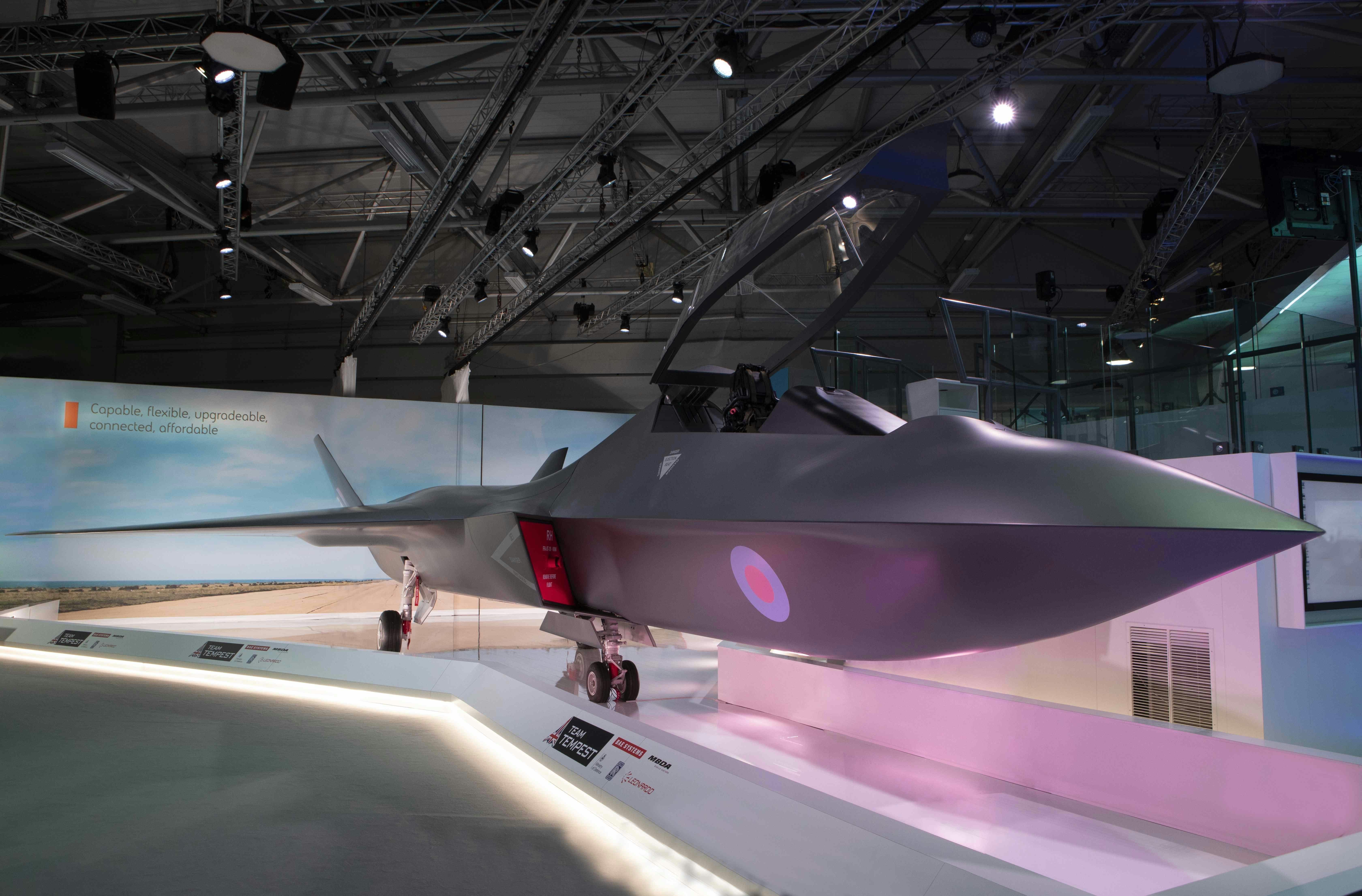
An optionally piloted vehicle is a hybrid between a conventional aircraft and an unmanned aerial vehicle, able to fly with or without a human crew on board the aircraft. The thinking is that, unimpeded by a human’s physiological limitations, an OPV is able to operate under more adverse conditions and/or for greater endurance times.
The USAF are also pursuing this with newer aircraft, notably the B-2 bomber replacement, the B-21. A document DODIG-2015-170, published last year named “Audit of the Acquisition of the Long Range Strike Bomber,” as well as other documents in a heavily redacted form, contain highly relevant official confirmations as to the aircraft’s baseline requirements.
The document clearly states that the B-21 will indeed be optionally manned as a core requirement.
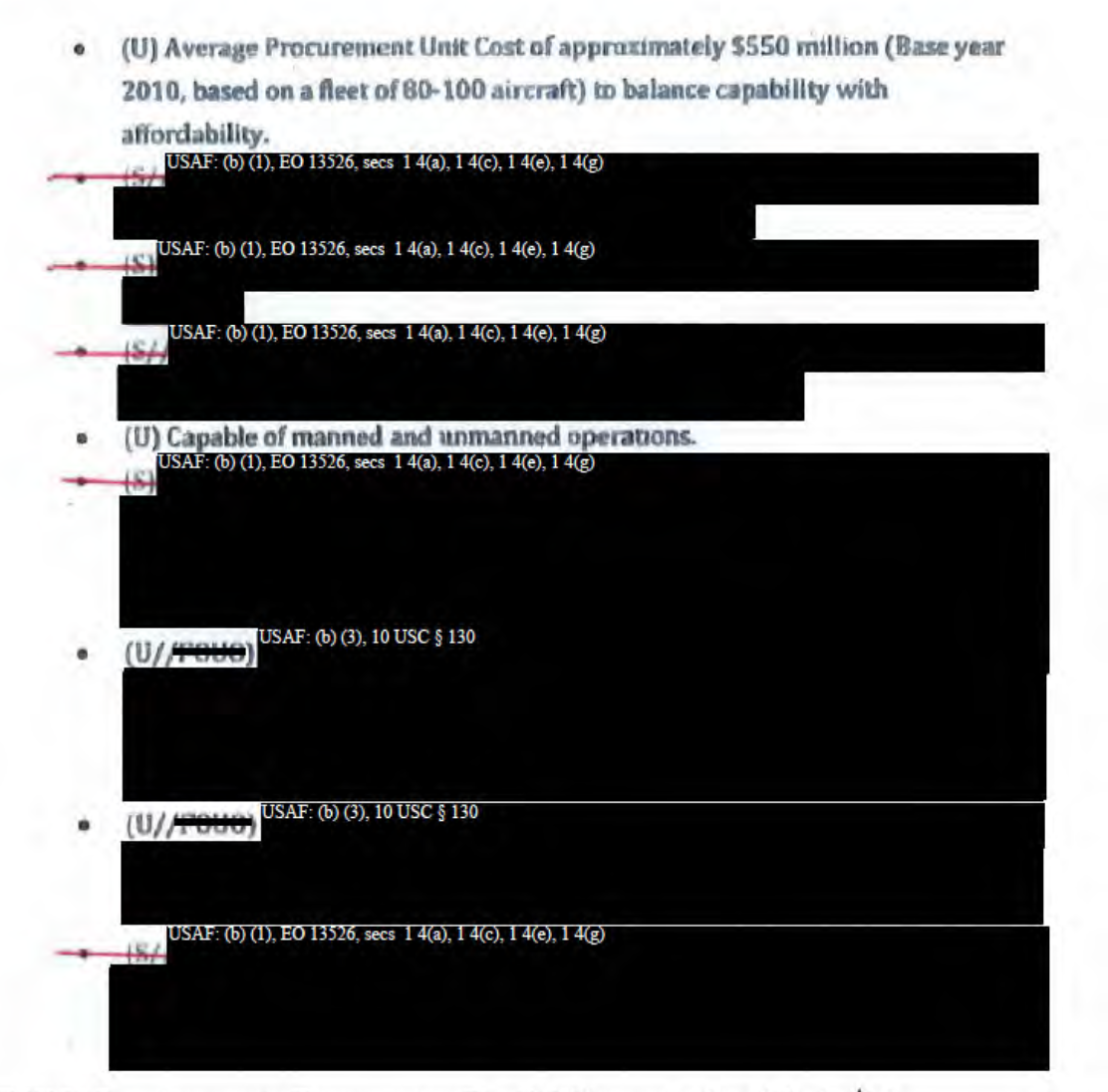
Retaining on-board controls, an OPV can operate as a conventional aircraft during missions for which direct human control is preferred or desired as an immediate option.
Another trend being embraced by ‘Team Tempest’ is an ability deliver significant information advantage and mission effectiveness, the future combat air system will act as a ‘force multiplier’, interoperating with a wide range of other civil and military platforms and services across air, land, sea, space and cyber domains – as well as unmanned systems. This technology started taking shape on the F-35.
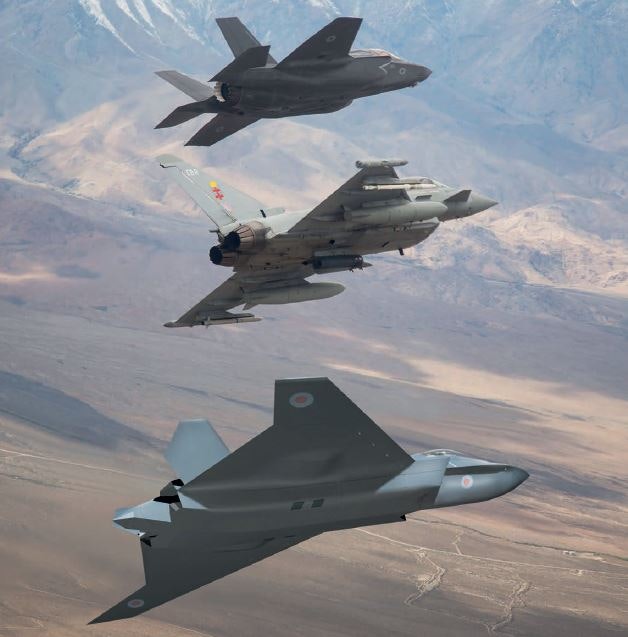
In fact, such is the F-35s sensor and data fusion capabilities, a small number of F-35s could provide the UK and her coalition allies with situational awareness within defended airspace where platforms such as E-3 AWACS and E-8 JSTARS would be unable to operate.F-35s could find and designate priority targets within defended airspace for a less stealthy fleet to attack from a relatively safe distance, further enhancing coalition capability.
The F-35s value is not only in its stealth or combat capability, it’s also in the flying sensor network it creates in the battle space. The ability of the F-35 to drastically improve the combat capability of other assets was demonstrated recently when an F-35B and Aegis Weapon System worked together during a live fire exercise, with the F-35 passing sensor data to another platform which then engaged the target.
Using the F-35 as a broad area sensor can significantly increase a warships ability to detect, track and engage a target. An unmodified US Marine Corps F-35B from the Marine Operational Test and Evaluation Squadron, based in Edwards Air Force Base, acted as an elevated sensor to detect an over-the-horizon threat.
The aircraft then sent data through its Multi-Function Advanced Data Link to a ground station connected to USS Desert Ship, a land-based launch facility designed to simulate a ship at sea. Using the latest Aegis Weapon System Baseline 9.C1 and a Standard Missile 6, the system successfully detected and engaged the target.
The exercise was the first live fire missile event that successfully demonstrated the integration of the F-35 to support Naval Integrated Fire Control-Counter Air and represent a very promising exploration into the interoperability of the F-35B with other naval assets.
Command and control of other systems, such as UAVs, will be also enabled from a fully customisable virtual cockpit say BAE, ‘with advanced human machine interfaces including eye tracking and gesture based controls, offering intuitive and sophisticated mission management’.
“Using a similar virtual approach, both mission planning on the ground, and the remote command of unmanned aircraft can be enhanced, ensuring a rapid and effective understanding of the battlespace.”
The FCAS will be quickly and affordably up-gradable according to another graphic.
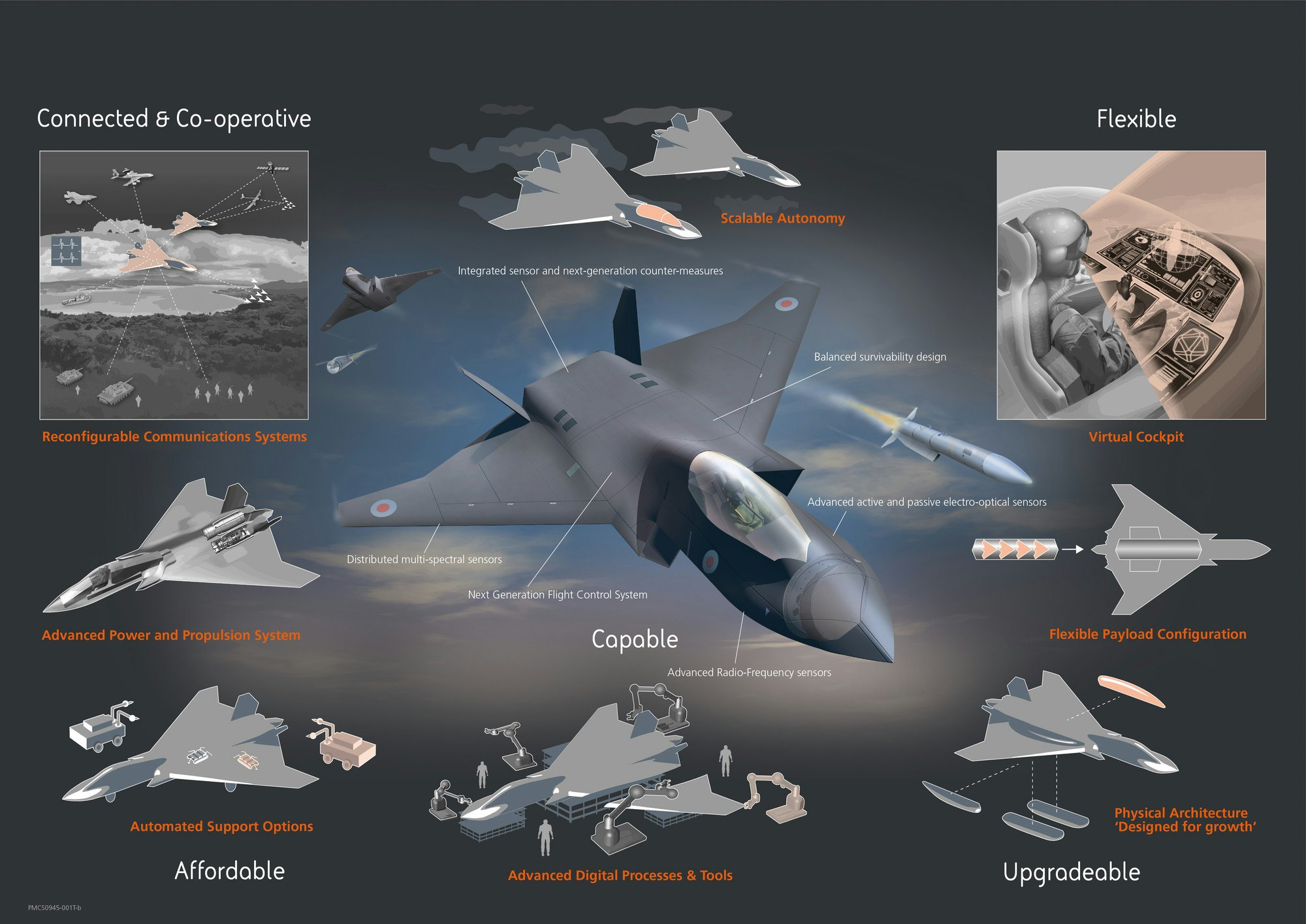
BAE also say in a release that advanced manufacturing techniques will play a significant role in reducing the unit production cost of a FCAS, and will be a key enabler of flexibility and upgradeability. For example, in-service support costs can be reduced by using robotics adapted from manufacturing to re-fuel, re-arm, role-fit, and repair.
“Exoskeletons, wearable displays and computing to provide hands-free instructions, guidance and technical publications could further reduce in-service support costs by helping to improve resource flexibility, improve the quality of work, and the speed at which tasks are performed. The use of artificial intelligence and data analytics in vehicle health and mission related data will improve aircraft availability as well as increase the mission success probability.
Training costs could be significantly reduced using the virtual cockpit and virtual mission planning system as a result of their low cost, flexibility, and extreme portability.”
Team Tempest Future Combat Air System concept via BAE.
While just an early look at what could possibly be, the concept aircraft and the concept technologies it represents gives an indication of the types of technologies that are developing around the world and are coming to the forefront of combat aircraft design.



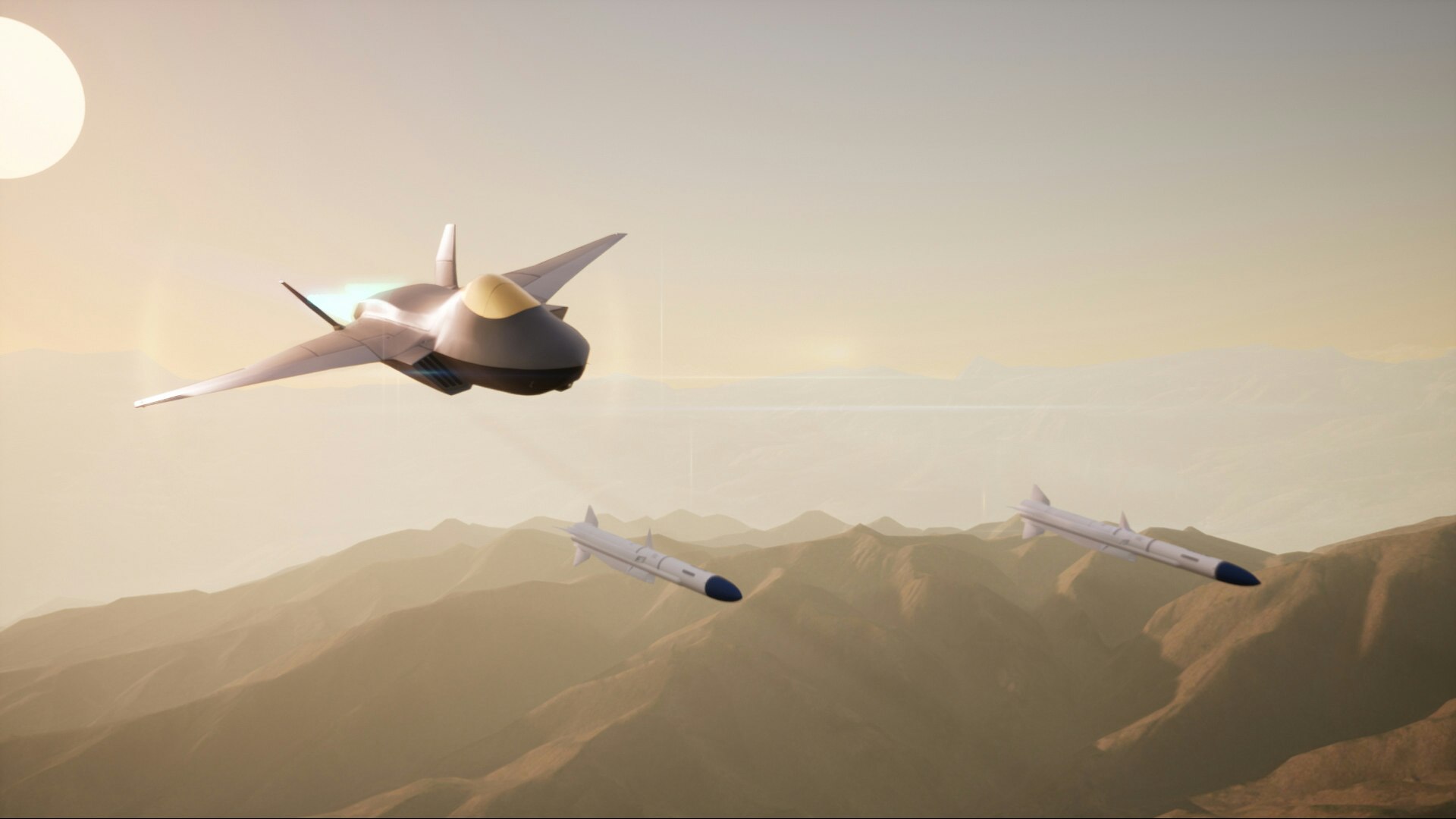











Meanwhile, across the Pond…
https://www.defensenews.com/digital-show-dailies/farnborough/2018/07/16/whats-going-on-with-americas-next-fighter-designs/
Note that this project will likely be a sovereign one only due to security concerns… Tempest as well?
Cheers!
there would have to be a jump jet variant.
Strange new approach ?
“BAE say that a future combat air system must be able to survive the most challenging combat environments meaning that payload-range, speed and manoeuvrability will be key.”
The F-35 is not very capable when considering these factors of payload-range,speed and manoeuvrability?
It is an awful lot of money for a flying sensor package. A drone would have been a much better option for that role.
Difference between 5th and 6th Gen. Tempest will have ‘bolt ons’ you add conformal tanks gain range but loose some speed and some manoeuvrability. Add a weapons pod, loose manoeuvrability and range but gain strike role. In raw form an agile dog fighter.
The F35 has already been badly compromised by the Chinese. I can only hope we’re doing the same to them…
Cheers
What are we going to learn from them? They are miles behind.
Not for long I assure you… We should be building backdoors into their systems and sprinkling our stolen data with booby traps in a fashion that they lose confidence in the viability and efficacy of what they steal…
We are already “at war” with the PRC – the shooting just hasn’t started yet. Watch their response as we get more engaged with Taiwan and particularly if we sell the ROC F35’s…
The PRC has painted itself into the proverbial rock and such with their population by making over the top threats such as “the day a U.S. carrier docks in Taiwan is the day we invade”. They can’t back down if we do something along that line because their people would demand action or else…
Stay tuned…
Cheers
Some nice pics of the ongoing RIMPAC 2018. Lots of RAN, RNZN, and RCAN participation. Complete with a PLAN spy ship!
https://www.flickr.com/photos/compacflt/sets/72157670619013048
Cheers!
jump jet ? price speed of production
How I see this panning out will be, Gen 5 is a stealth air frame, 5.5 will be the ability to network seamlessly with other UAV’s or operate as a UAV itself, Gen 6 will be to incorporate laser technology that actually works. If it works AA missiles could end up useless unless they adopt an erratic approach pattern in which case maneuverability will become more important again.
Yep could end up full circle where you need to be close enough and be able to sit on the tail of you adversary for a laser to be effective or use guns as the opponents defence laser means missiles are useless.
not quite sure i see that happening…. lasers can track targets independently of the direction the plane carrying it is facing and hit at the speed of light…… as long as they have enough power once a target enters range it shouldn’t matter how hard it maneuvers.
however at least initially the ones that we can put on fighter sized aircraft definitely wont be quite at that level yet
Yes if the laser is powerful enough then the dog fight is not going to happen. But maybe a feature that will define a 6th gen fighter is a degree on hardening to direct energy weapons so only the most powerful laser would penetrate and they would not be flying on fighter for some time. Lower power lasers would need to focus on the same spot for longer, which means rolling the aircraft would make the laser ineffective. So you’re back guns. Future dog fighting tactics could involve using laser to force you adversary into certain moves where you can use guns. removing feature which could be targeted buy lower powered lasers such as control surfaces would make the airframe less vulnerable.
In the future the hardest thing to take on could be the bomber, powerful offensive direct energy weapons so missiles are useless. Hardened a/f to direct energy weapons so fighter have to get close to use less powerful weapons effectively which exposes them the bombers more powerful weapons, flies high so ground based lasers are ineffective especially if the weather is poor at ground level.
No force field?
I am thinking the same thing a force shield similar to an AT field
Tractor beam though…
Cheers!
Good article. Highlights why defence programmes like this can really benefit the UK with areas like advanced computing and new manufacturing techniques.
Agreed. This is, for once, a shrewd move by the U.K. The Franco-German alliance thought to squeeze the U.K. out with their own plans. Now the U.K. has struck back and hard. I see Tempest as a showcase and a warning shot combined. I can think of several other players who would now have a choice beyond what the masters of Euroland offer. The U.K. should stop grovelling and get on doing what it has been epically good at for the best part of a century in aerospace: Innovation.
I wonder if we could also produce a longer range version of Tempest (increased size) using the same design model and techniques to carry an increased internal weapons package?
With four engines instead of two, you have the potential to house a 100kw laser plus a greater array of current and future long range weapons such as storm shadow and Perseus.
Using China as an example who are looking to increase the size of its fleet to that of the USA, we will need something in our arsenal to counteract this and with enough reach.
It would be far safer over water too!
Update below on the F35’s next power plant F.Y.I.
http://aviationweek.com/farnborough-airshow-2018/f-35-engine-upgrade-would-enable-directed-energy-weapons
100kW laser possible.
https://newatlas.com/rheinmetall-laser-test/25504/
Is that article from 2012? If so it looks like the UK is a long way behind in testing. If the results from that test is accurate then it looks like the technology is a lot further along than I thought.
Dragonfire starts outdoor testing this month. And yes, the article was posted in 2012. Dragonfire will be a finished product by 2025 latest as I understand it.
By 2035…!
Whilst I am over the moon we are going for it, I can’t help but feel that maybe we should be waiting for the Sabre engine to be proven. Tempest could become obsolete within years (and all other fighters) if the technology works. Imagine a fighter that can dip in and out of space, travelling at Mach 5 in the atmosphere and Mach 20 plus in the edge of space. It could outrun anything including hypersonic missiles, and pop up anywhere around the world within an hour. We would be a country mile ahead of almost everyone. I guess travelling in space will add huge cost and the sabre engine may take more than another 15 years? I don’t really know.
Designing a fighter than can go hyper sonic is going to take some doing. The sabre engine looks amazing but it is also quite large and the flight characteristics of a space plane are going to be very different from those of a fighter.
http://www.latimes.com/business/la-fi-boeing-phantom-express-20180716-story.html
Yup…
You don’t actually need sabre, you can just “bolt” (very carefully) the precooler to a jet engine and vastly improve its capability.
And sell them to the US for millions.
USAF are meeting UK representatives this week on Tempest…..
https://www.military.com/daily-news/2018/07/17/uk-showcases-its-next-gen-fighter-us-stresses-interoperability.html
Cheers!
Yes. The Americans came to talk about HOTOL too. 33 years later and we’re still waiting for that to take its first test flight.
We intentionally destroyed our own independent aviation industry decades ago and no politician has the guts to spend the billions needed to rebuild it. So let’s drop this folly, stay in bed with the US on aviation, and concentrate our money on improving our ship-building capability.
50kw laser. That’s nice. What can that actually achieve? Dazzle a pilot at 50yds or melt an aircraft at 100 miles?
Awesome for discos!
In seriousness though I believe the LaWS on trials aboard USN warship(s) is 15-50KW and that seems to inflict reasonable damage to surface targets and is enough to down small-medium sized drones over shorter ranges… you’d imagine it’d be employed as a defensive countermeasure for engaged missiles… who knows!
First post by the way… Silent observer for quite some time 🙂
Welcome!
Cheers
IknowNothing-See my link above re 100kW laser.
Thanks!
Never going to see the light of day, shame as well, nice looking aircraft
who’s stopping people posting?
shame it won’t see the light of day, good looking aircraft
I admire everyone’s optimism and enthusiasm for this project. Personally I think there’s more chance of the RAF taking delivery of a fleet of TSR-2s than seeing even a single Tempest demonstrator take to the skies.
At least the TSR-2 flew briefly
James, I would agree that it seems unlikely that the Tempest program will progress in its current format.
As a national project, it ‘could’ proceed relatively quickly as a pure technology demonstrater, utilising as much Typhoon technology as possible.
We’re talking a demonstrator with the same relationship that the X35 has to the F35.
It’s crucial it strikes a difficult design balance, cost effective, but close enough to a projected operational system to act as a serious sales tool.
Get that right and it will lead to international partners and orders…
As has been said by Mike, Chris and others here, I don’t see the Franco German project proceeding quickly, if at all.
The Germans being Spend thrift and the French wanting to dominate and control the project will see them at odds with a stalled project…..
There’s a golden opportunity here, the outcome of Tempest, positive or negative, will determine the course of our military aviation industry for the 21 century…… Key player…… Or bit player.
I only hope industry and government have the will to reach out and grab it…
Agree, get the demonstrator flying like we did with Taranis. Se who we can hook as partners.
The TSR2 story and its demise happened in very different circumstances. Wilson’s Labour Government had no interest in Defence-either British Defence Industry or Armed Forces. They cancelled the new Carriers, new transport plane and supersonic Harrier along with TSR2-helped ironically by Duncan Sandys the Tory Defence Minister prior to Wilson who said the days of manned jets were over and would be replaced by missiles.
The UK now desperately needs to initiate its own projects and this looks like a great start. There are plenty of potential partners-Canada, Australia , Sweden and Japan among them-not to mention the USA where maybe this time round we could get to be 50:50 partners instead of sub-contractors!
(Chris H) geoff – a good recollection of what happened in the ’60s there. But even in the loss of TSR-2 we gained crucial knowledge for Concorde in engines and avionics. Yes we need foreign customers and if possible investors and to that end we could copy the F-35 idea of ‘Tiered Partnership’ maybe. But the Anglo – Italian Team Tempest must retain dominance and control. This is as much about the UK making a statement about our new direction as building a new fighter.
As for partners?
Canada – Yes certainly although I doubt their CF-18s will last to 2035 so a stopgap Typhoon deal will be needed.
Australia – Not a chance as they are now 100% locked into the F-35A and US aerospace supply
Sweden – yes please – an excellent manufacturer and very good at keeping costs down
japan – Most definitely not IMHO – They are an extension of US military arms manufacture and purchase and rely on the US 7th Fleet. Anything shared with them will be on a Lockheed Martin desk faster than it would be on some desk in China.
USA – Be very careful here. They will take it over, change it for what suits them and we will be left trailing. And 50 / 50 is far too generous. By all means let them buy it but built here but anything else? OK maybe a ‘Tier One Partner’ deal in return for some £2.3 Bn as we did with F-35 and they can build the rear tailplanes. Just remember how they shafted us, an F-35 Tier One Partner and gave engine maintenance to Turkey and FAL and major maintenance to Italy both of whom contributed far less than we did in cash and orders …. what goes round comes round.
Geoff – to be clear, I was not comparing the two projects. I was just making a tongue-in-cheek point that in my view there is no chance we’ll ever see Tempest fly. There is simply not the political will to spend the billions needed to resurrect a full-scale aviation industry in the UK. Trust me, I’d love to be proved wrong. But I’d stake my house on this bet. Tempest will be talked about for years and will go nowhere. Don’t waste the money on a fantasy when the defence budget is already seriously overstretched. Stay in bed with the US on aviation and spend more on our excellent shipbuilding capacity instead.
One thing in favour of this project (might not end up looking anything like these concepts though) going ahead. Is that this wouldn’t be about resurrecting an aviation industry. There needs to be a project like this, just to keep the industry that we have now alive. As they have mentioned in their recent Combat air strategy, that section of the aviation industry has a annual turn over of ~£6.5 billion. That seems to be mainly made up of Typhoon and Hawk sales. Both of those aircraft have very limited future in terms of new sales. So there needs to be something to at least replace one of them.
As for the cost of a project like Tempest, I’m sure any estimate is going to be off, but if you look at other fighter aircraft development costs, then they give you a general idea. At the high end you have the f-35 which seems to have cost (or estimated to cost) around $43 billion for the development of the aircraft and another ~$11 billion for the engine and lift fan (I believe that includes over $2.5 billion for the F136 engine that was cancelled.) However really that is three aircraft in one project. Another high end aircraft was the F22, which is said to have cost somewhere around $30 billion in development costs. Eurofighter I think is ment to have cost somewhere around 16-17 billion euros, although the figures seem to vary widely.
So lets just say we went with a mid range aircraft that didn’t try push technology in all areas, but that could still hold it’s own. You would think that around £25 billion (maybe upto £30 billion) would be enough for development. £20 billion might even be enough. Even if you went for a entry into service of 2035 (which seems a bit hopeful), then a average annual investment of ~£1.5 billion should be enough to cover those development costs and the first few aircraft. Of course we won’t make such a investment on our own and will end up with some partners. However in my view it would be crazy for the government not to go ahead even if they couldn’t get any partners to share the costs. If a investment of around £1.5 billion secured an industry that has sales of £6.5 billion, then I believe that the government would be at least getting their money back from just the various taxes on that £6.5 billion.
Without getting into a debate if brexit is going to be good or bad for the country, the one thing I believe it will do, is force governments to realise they need to start investing in research, industry and infrastructure.
We can only hope guys, the Tempest demonstrator needs to go ahead for the UK to stay in the game as a first division player in military aviation
If we let this project fail, we will be relegated to a bit player, begging for crumbs from Uncle Sam’s table.
We haven’t been first division in aviation for decades, and there isn’t the political will to spend the billions needed to fight for promotion. We can’t even get our act together replacing the Hawk, instead developing incremental changes on a very old platform with far newer and better alternatives which, for political reasons (foreign planes for Red Arrows? didn’t think so…) we can’t buy.
We’re first division in naval hardware, and should spend the money maintaining and expanding that.
But, if fighter sized stealth objects can be tracked by low frequency radar.
Why not just built a large aircraft, with stealth, optionally crewed and give it stand off weapons, long range aa missiles and lasers?
Then it can penetrate unfriendly skies, defend itself and mark targets.
If lasers works out, maneuverability is obsolete.
Jim
Look into the Lighter Than Air aircraft the US is rumoured to be playing with, at night.
This?
https://news.vice.com/article/lockheed-is-still-trying-to-get-its-lighter-than-air-craft-to-take-off
There’s a similar UK based project, which is finding the whole ‘wind happens in the real world’ issue a bit of a challenge at the moment. I’d wondered if that might be a platform for AEW over the carriers in future – perhaps big enough for crew to spend extended periods onboard.
If you could build an autonomous one, which could refuel in flight and beam data back to the carrier for analysis, then why would it ever need to land? (within reason anyway)
Nice concept if they can get past the “Hindenburg Effect”…
http://www.dailymail.co.uk/sciencetech/article-3676614/Flying-Bum-air-Route-test-flight-world-s-largest-aircraft-Airlander-10-announced.html
They damaged it on one of the first flights as I recall. However, ultimately itmay be successful. WWII blimp operations off the U.S. coastline and escorting convoys were very successful with far less technology. The USN actually sent a an advanced blimp into the Arctic.
Cheers.
Nope. I’m talking about the Black Budget of the US DoD Nigel. That LM thing is the White world for public consumption while other stuff goes on out of sight.
Sightings of Huge Triangular aircraft for decades now over parts of the US. Silent. Moving at walking pace. Black. Almost invisible.
This touches on the UFO subject but many of these sightings are of Black budget aircraft, many of which have not seen the light of day yet, or may never.
They’ve been seen here in the UK as well. The TR-3B is the aircraft I think you are referring to?
One such yes. I see you are informed on that subject? Though that name is controversial to say the least and I make no claim to believe in any such type except that there are indeed aircraft out there the white world is not privy to.
There is also mention of a TR3A and various unconfirmed abbreviations that are either errors on the part of researchers or deliberate attempts to mislead. Example TR3 may be confused with “Tier 3” which were UAV programmes such as Dark Star.
Our own Boscombe down was reported to be involved in an aircraft called ASTRA, and the meteorological officer of RAF Shawbury has had a flying triangle fly over the station. All this way back in mid 90s.
Reports of it caught flying over Enfield tend to clearly suggest that such a plane exists but is still classified as a black project.
It could also be the SR 72.
http://news.bbc.co.uk/1/hi/programmes/newsnight/5079044.stm
Here is the UK’s base that is most probably used in conjunction with Area 51 for transatlantic crossings.
http://www.thelivingmoon.com/45jack_files/03files/RAF_Machrihanish.html
Reports of it caught flying over Enfield tend to clearly suggest that such a plane exists but is still classified as a black project.
It could also be the SR 72.
http://news.bbc.co.uk/1/hi/programmes/newsnight/5079044.stm
Yes. Aurora is legendary. Though some suggest the name “Aurora” as it was first seen in DoD expenditure documents was actually a name for the then still classified B2.
The suggested SR72 designation is usually linked to Aurora, a possible replacement for the SR71. This aircraft has a distinctive engine sound possibly from a PDWE Pulse Detonation Wave Engine, and has a distinctive “Donuts on a Rope” contrail. It has been monitored in California, descending into Nevada, obviously going to and from Groom. It was also photographed by Chris Gibson while he was on an oil rig in the North Sea in the late 80’s, with two F111 flanking it refuelling from a tanker.
I do not believe the Aurora is the aircraft I alluded to further above, seen over the US, the UK and also Belgium in 1990. That aircraft could fly silently, hover, move at walking pace, and then accelerate with speed and G forces possibly beyond a pilots level. The Aurora is not believed to have any of these capabilities.
The Belgium episode included sightings seen on radar, chased by F16’s, and seen by the public and Police officers.
All those things have been claimed to be capabilities of the TR3B.
I’d also add that the sightings in Belgium then involved the aircraft heading at high speed towards the UK, as confirmed by the Belgian Air Force. The MoD predictably was silent on the subject. As NATO ADGE networks are linked the RAF, RAF Neatishead, and High Wycombe must have been fully aware of it.
Here is the UK’s base that is most probably used in conjunction with Area 51 for transatlantic crossings.
http://www.thelivingmoon.com/45jack_files/03files/RAF_Machrihanish.html
RAF Macrihanish.
The base is now used occasionally by the army for exercises. Much is made of its runway, said to be the longest in the UK, and that USN Seals were based there. Though they were a NATO deployment in conjunction with Nuclear depth bombs I believe not linked to testing of an advanced aircraft.
People say the base is ideal as it is remote and its runway leads west out over the Atlantic, and it has a giant Gaydon Hanger to possibly store such an aircraft.
For me the problems with this are that it is close to Campletown, has a golf course next door to it, and that many of these rumours may have been encouraged to attract visitors to the area.
I do not believe any prolonged testing took place, but it may be possible it was used on a handful of occasions. Of more interest to me is another nearby facility, the old DERA West Freugh, connected with UAV testing with the Special Projects Team of BAES at Warton.
RAF Machrihanish, previously a WWII Coastal Command sea plane, Cold War V bomber Force base and NASA Space Shuttle certified emergency landing site, is now Campbeltown Airport owned by the Machrihanish Airbase Community Company (MACC) and is a small airport and a developing business park.
http://www.machrihanish.org
The Gaydon hangar has a sustainable fish farm company resident, and all the other ex-MOD facilities as well as the ex-Navy Seal Bldg also have local companies in them.
The majority of the runway is not usable for aircraft landings as it has fallen into disrepair, a shorter eastern end is maintained for the twice daily Highlands and Islands Airports Ltd (HIAL) DH 6 twin otter/Saab 340 aircraft flights.
http://www.hial.co.uk/campbeltown-airport/about-us/campbeltown-airport-today/
The site was a recent bidder for the UK spaceport completion (horizontal launch) but did not gain UK Space Agency support.
http://www.discoverspaceuk.com
No UFO landings, departures, storage or testing authorised or taken place despite being a potential UK spaceport !
The site is used for police training, but no military uses, purely a commercial site.
History of RAF Machrihanish
http://www.machrihanish.org/history.php
Least like to be UFOs, more likely to be full enjoyment of the excellent local Campbeltown Malt whiskeys?
https://scotchwhisky.com/magazine/around-the-world/festivals-and-events/19224/campbeltown-malts-festival-2018/
One further interesting post that tends to suggest black projects are or have taken place inside UK airspace.
https://www.theregister.co.uk/2000/07/10/top_secret_us_plane_caused/
Had not read that one.
It includes a lot of what I mentioned above.
As in that article, much of this is stuff is immediately linked to the UFO situation, which is actually encouraged by the authorities, as it will then ridiculed by the majority, discrediting the whole subject, while the secret testing happily continues.
Correct Daniele!
fifty pest at least, cheaper than an f35, better and above all faster to produce rather than the dismal productio rate , that ‘hank the yank’ is currently maging
Interesting article.
https://www.defensenews.com/digital-show-dailies/farnborough/2018/07/16/whats-going-on-with-americas-next-fighter-designs/
Only one word is needed here………..
“Breathtaking!!”……end of.
what would happen if an enemy aircraft was totally reflective like a mirror and beamed by this?